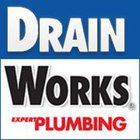We had a problem with the drains and called in a different and very reputable company to identify the problems. They came out and ran a camera (scoping) through the drains and identified the two problem areas in the outside drains. The camera itself was heavy and the cable stiff enough that pushing the camera through the drains actually unblocked the drain. We paid them for this work. They gave us a written estimate for what was needed and left.
I looked for a second estimate, but decided instead to save some money and use Drainworks promise in their Yellow Pages ad to knock 10% off the price of any written estimate. I relied on their reviews at Homestars in choosing them. Their guy came out very quickly and I handed him the estimate and explained everything. He first came up with a different solution that would cost about 80% more. There's nothing wrong with that. The cheaper solution was to patch the problem areas. But there would still be a chance that the tree would crack the pipe in a different place. The more expensive approach was to access the drain via a hole the would dig a hole in the basement and then put an epoxy liner inside the existing pipe to where it became the city's drain line. Another hole would be needed at that end. I believe this is the inversion method.
We decided to go with the patchwork solution and asked for 10% off the first estimate. After speaking to his supervisor, he came back with a price that was about 8% less. He also included scoping the drain in the price but I felt that was something they had to do anyhow. So I had a minor problem with that.
They came when they said they would, scoped the drains and made the fixes by digging by hand down to the drains and repairing them. They were clean, polite, wore booties when they came in the house and did an excellent clean up. At the end of the job, they rescoped the drains and showed me the repairs. If I understand it correctly, they probably couldn't have used the inversion method because, unknown to us when we signed the contract, there were underground y connections outside the house into the drain line from a time when downspouts from the roof went into the drains (that's now illegal). The guy from the first company knew about the problem because he scoped the drains before deciding what was needed.
Afterwords, I read the fine print on back of the contract and compared that to the fine print on the back of the first company's estimate. Both contracts made the customer liable for the cost of a broken snake and for the cost of removing if it got broken. Apparently, this can happen. In fact, the first company gave up trying to fix one of the problem with a snake with a cutter head when it looked like it might break because of tree roots. It might cost a few hundred dollars for the snake and cutter head. Under the circumstances, I wouldn't have been that upset to learn that I was expected to pay for the snake/cutter head.
But Drainworks tries to put the customer on the hook for over $5000 if the scoping camera gets broken. Remember that on any proper repair job, you need to scope the drains before hand. And unlike the problem with a snake, the customer is unlikely to learn in advance that there might be a condition in his drains that will break the camera. It's unfair to put this type of gotcha in small print on the back of the contract. Broken cameras should be part of the cost of doing business. And at the minimum, they should put the risk of camera breakage clause on the front of the contract and make the customer initial it. So I didn't like this. Of course if they did this, customers might be less likely to sign up for scoping.
And finally, it turns out that there is another method of fixing the drains that I learned about after the work was done. I never got a price on this method, but I expect it would be about the same price as the method that Drainworks wanted to use. The advantages of the pulled-in-place method is you need one less hole. A hole is needed where you're going to end the liner. But you don't need to make a hole in the basement. Instead, after cleaning out the drains, a line goes from the far end back to a cleanout inside the house. The epoxy felt liner is attached to the line and then 'pulled-in-place' to exactly where you want it. And Y connections outside the house would not be a problem. Very neat.
This method is called pulled-in-place. If I understand it correctly, with this method you don't need to make a hole in the basement.

